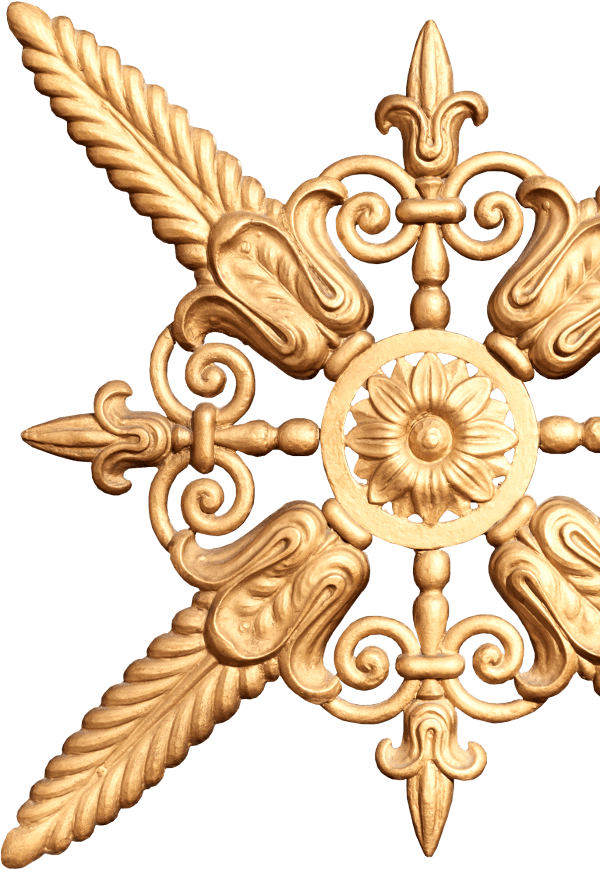What role could luxury assets – collectibles such as watches, wine, or art – play in portfolio management? What are the tax implications of owning and passing them on? And how do international borders impact luxury asset ownership for an increasingly international generation of high-net-worth individuals (HNWIs)?
These questions were high on the agenda at an evening held recently at the historic Farleigh House, on the outskirts of the 3,000-year-old UK city of Bath, an ideal backdrop to explore the timeless value of luxury assets. Co-hosted by Lombard Odier, the evening brought together an invited audience and a panel of experts covering numerous fields within the luxury sector, to examine the investment value of luxury assets, and take a look at how the collectibles market is evolving.
Stuart Wright, private banker at Lombard Odier, kicked off the event by highlighting a key trend among high-net-worth individuals (HNWIs), “While many HNWIs remain invested in traditional portfolios – such as equities, fixed income, and alternative assets – there is growing interest in diversifying portfolios through tangible luxury assets. With today’s traditional investment world looking uncertain, luxury assets are increasingly valued not just as collectibles, but as vehicles for enjoyment, preservation and long-term investment potential.”
The Knight Frank 2025 Wealth Report: luxury investments, wealth migration, and real estate trends
Alex Koch de Gooreynd, partner, International Residential at global real estate consultancy Knight Frank, opened the evening’s discussion with key insights from the latest edition of Knight Frank’s highly-respected Wealth Report, an annual study that explores trends among the ultra-high-net-worth (UHNW) community.
He explained that cross-border advice is becoming an increasingly important area for wealth and tax advisors, as more and more clients ask, “Where can I build wealth over the next 10-20 years, with stability and clarity?”
This emphasis on mobility and having an international outlook is borne out by the data, he noted, with millionaire migration accelerating. According to research by Henley & Partners, 134,000 HNWIs were recorded as having relocated in 2024 – up from 120,000 in 2023 – with a record 142,000 expected in 2025.1 For UK-based clients, the end of the non-domicile tax regime has become a catalyst for planning a move away, with Switzerland, Monaco, Dubai and Italy all well-placed to benefit. However, he noted, while tax remains a key factor in relocation decisions, political and legal stability, alongside quality of life, are growing in importance.
134,000 HNWIs were recorded as having relocated in 2024 – up from 120,000 in 2023 – with a record 142,000 expected in 2025
He explained that for many HNWIs, real estate, including in the luxury residential segment, is a key investment focus, with capital appreciation remaining a primary driver – prime residential prices rose by 3.6% globally in 2024, led by Southern Europe. Though real estate remains the more resilient investment choice on the whole, he concluded that carefully selected luxury assets can outperform, including whisky, which has risen 191% over the past decade, and some regional wines (from Essex for instance), which have seen a 20% gain due to the impact of climate change, which has restricted supply2.
Read also: Global art trends viewed by Guillaume Cerutti, Chairman of Christie’s International
Fine wine and whisky: tapping into the spirit of rare collectibles
Joe Emmett, private client account manager at the more-than 300-year-old, family run wine merchants Berry Bros. & Rudd, picked up on the topic of fine wine and spirits. He explained that buyers looking for an investment-grade wine should focus on indicators such as brand equity, a strong track record of price appreciation, and the potential for revaluation – such as the arrival of a renowned winemaker or investment from well-known and trusted names. However, he noted, “Wine is a very long-term venture. It’s a 5-10 year period to look at any kind of appreciation.”
For investors, he continued, the wine market has been transformed by digital tools like Liv-ex, which was created in 2000 and has become the wine market’s equivalent of a stock exchange, tracking value performance and trends. Recent standouts on the exchange include Vega Sicilia “Unico”, Spain’s top-traded wine in 2024, and Dom Pérignon 2008, whose value rose nearly 40% post-release. While the market overall is currently experiencing a 9% year-on-year correction following pandemic-era highs, it has demonstrated resilience in previous downturns, he said. For instance, during the 2008 financial crisis, the Liv-ex Fine Wine 100 index fell by around 10%, showing resilience compared with the broader volatility seen across global equity markets.
Wine is a very long-term venture. It’s a 5-10 year period to look at any kind of appreciation
Turning to whisky, Emmett noted similar value drivers – scarcity, brand equity, and global collector demand. Whilst the whisky market is also experiencing a 9% year-on-year decline, this appears to reflect a broader market correction following the elevated prices seen during the pandemic. Nevertheless, it appears that buyer interest is stabilising. Investors and collectors should adopt a long-term outlook, he concluded, balancing passion with careful consideration of the fundamental value drivers.
Read also: Investing in private assets – the “giant of the real economy”
Watches: timing the market
James Mercer, founder of luxury watch dealer Watches of Bath, explained that the watch sector is more volatile. Contrary to the traditional investing motto that ‘time in the market matters more than timing the market,’ he explained: “Watches can be a great investment, but it’s all about getting the right piece at the right time.”
related content.

our private banking expertise in the uk.
learn more 2022, in particular, saw dramatic price swings, he noted, with government stimulus following the Covid-19 pandemic leading to increased liquidity and pushing demand beyond supply. For example, he said, the market price of the Patek Philippe Nautilus 5711 soared from £320,000 to over £600,000, before correcting to around £190,000. Since then, however, the market has stabilised, with strong popularity for investment pieces driven by celebrity endorsements and social media influence.
2022 saw dramatic price swings with government stimulus following the Covid-19 pandemic leading to increased liquidity and pushing demand beyond supply
Investors should be aware, he explained, that the market tends to be split between pre-owned and new watches. Initial buyers often see the highest gains on the first resale, with premiums particularly applying to steel and gold models (Rolex recommended retail prices (RRPs) rise approximately 4% annually for steel and 8-9% for gold). Crucially, he concluded, though not all models appreciate, new watches sold into the pre-owned market can yield immediate profits, free of capital gains tax.
Case study: four timepieces, four lessons in value
Rolex Oyster Perpetual Stella Dial
With a production period of just 18 months, the bold red and yellow Stella Dial soared in value after social media buzz hinted at discontinuation. Prices dipped post-COVID but continue to track Rolex’s steady RRP rise – proof that scarcity and hype can shape value.
Rolex Submariner Hulk
A green dial icon, the Hulk spiked in value in 2022 but has since stabilised. It remains a collector favourite thanks to its design and daily wearability, with robust value reflecting its strong long-term market hold and emotional appeal.
Patek Philippe Nautilus 5711
A dream watch for many, the Nautilus combines design, rarity and prestige. Production ceased in early 2021, sending values soaring. Unlike Rolex’s million-plus annual output, Patek makes just 55,000 watches a year – its exclusivity cements the Nautilus as a collector’s prize. Recent price dips have made entry more accessible.
Rolex Rose Gold Day-Date with Olive Dial
With an olive-green dial and Everose gold case, this Day-Date saw a £4,000 retail hike in early 2025. However, secondary market prices often lag behind retail, with gold models commonly selling below the new price, underlining the importance of understanding resale dynamics and liquidity in luxury watch investing.
Succession and tax considerations
Isobel Holgate, wealth planner at Lombard Odier, picked up on this emphasis on the potential tax benefits of collectible ownership. “Luxury assets are growing in popularity, in part due to some of the tax advantages,” she explained. “They’re often marketed as being tax free, and it’s true that there are various capital gains reliefs. However, are they always as attractive as they seem?”
Highlighting the complexity of the luxury assets landscape, she stressed that these assets frequently sit outside standard bankable frameworks, making them vulnerable to regulation differences across jurisdictions.
Watches, for example, are considered wasting assets, meaning that they are assumed to have a predictable lifespan of 50 years or less. As a result, in the UK, they are exempt from capital gains tax (CGT) – however, they remain subject to inheritance tax (IHT) and this can easily be overlooked or misreported.
Similarly, fine wine may be CGT-exempt unless it has a lifespan of over 50 years (as can be the case with port or rare vintages), while the taxation of whisky can depend on whether it is in cask or bottled, as its expected lifespan can vary greatly. Provenance, storage in bond, and proper documentation all play a role in determining tax exposure, making a detailed understanding of the intricacies of the rules essential.
Integrating luxury assets into a broader wealth strategy isn’t only about preserving value, it’s also about protecting legacy, across generations and borders
Luxury real estate, she continued, presents its own well-known challenges, including CGT, IHT and Stamp Duty Land Tax. Holding property via a company or trust can offer planning advantages, but requires jurisdiction-specific advice to understand the potential pitfalls. Across all kinds of luxury asset ownership, she underlined the importance of anticipating valuation disputes, market volatility, and tax scrutiny, and of coordinating with legal and tax advisors. This is especially true, she noted, when transferring assets within families. “Integrating luxury assets into a broader wealth strategy isn’t only about preserving value, it’s also about protecting legacy, across generations and borders,” she concluded.
Read also: How to build a holistic wealth strategy – interview with Nannette Hechler-Fayd’herbe and Sabine Heller
Integrating luxury assets into wealth planning
As luxury assets become a growing component of private wealth, discerning investors are looking beyond the prestige or personal enjoyment of ownership, to explore their role in a long-term wealth strategy. Most importantly, with their low correlation to traditional asset classes, luxury assets are seen as offering valuable diversification benefits.
Integrated carefully, luxury assets can enhance portfolio resilience by providing exposure to the real economy, reducing correlation to public markets, and capturing long-term structural trends – from the enduring appeal of global brands to the rising demand for tangible stores of value. As with our World Brands strategy, which targets companies with strong pricing power, brand equity and capital efficiency, the same fundamentals apply when investing in real-world assets: quality, scarcity, and long-term relevance.
However, investors must approach them with caution – these assets demand specialist insight, rigorous due diligence, and tailored planning across investment, legal and tax dimensions. At Lombard Odier, we understand that luxury assets often carry an emotional, as well as financial, value. Drawing on over two centuries of experience, and a dedicated platform for private assets, we help clients navigate the complexity of the sector with institutional discipline and a long-term perspective. Whether structuring ownership, ensuring regulatory alignment, or planning succession, we are committed to helping families turn personal collections into enduring legacies, seamlessly integrated into their broader portfolio and purpose.
Past performance is not indicative of future performance. The asset performances mentioned in this article may represent isolated cases and should not be interpreted as reflective of the overall market trend. Lombard Odier does not provide tax advice.







share.